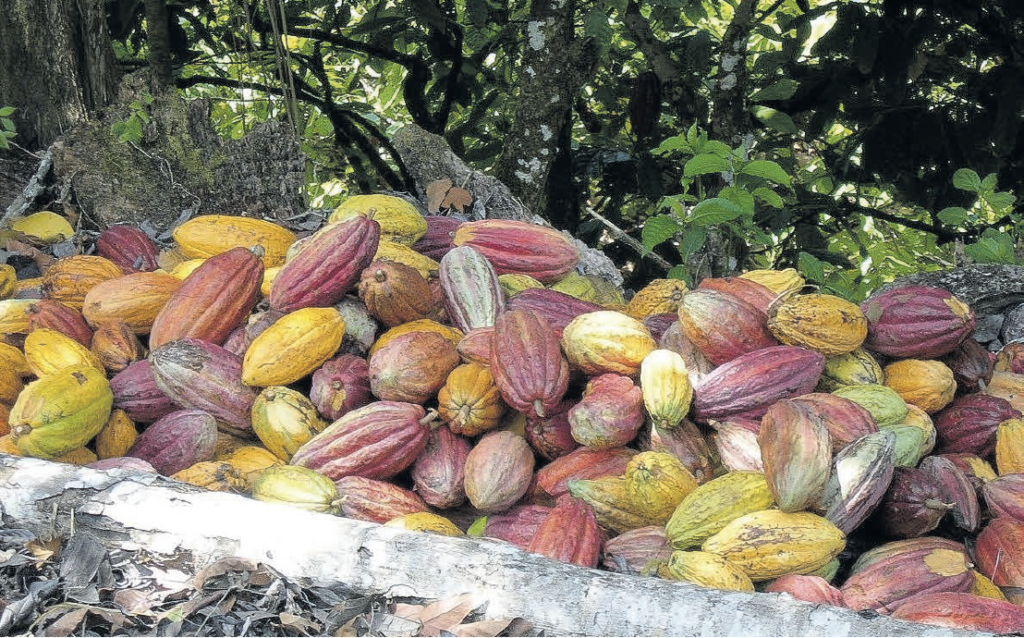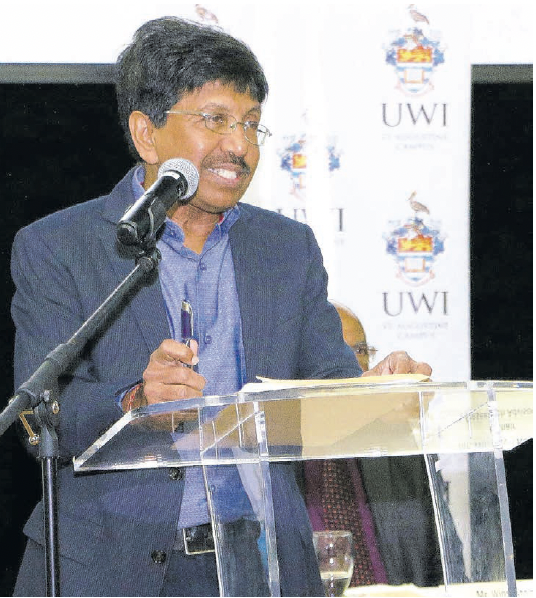Low production, climate change leave cocoa industry in steady decline

BAVINA SOOKDEO
Although Trinidad and Tobago’s Trinitario cocoa is globally renowned and has a high demand around the world, Christopher Paul, president of the Montserrat Cocoa Farmers Cooperative Society Ltd (MCF), says the current state of the cocoa industry is “not very bright.” He says more is needed to increase production. Paul is also calling for the revival of abandoned cocoa estates.
Business Day spoke to Paul, who explained that the production of dried cocoa beans in the country is in steady decline. In 2020, MCF exported 62.5 metric tonnes. That dropped to 37.5 metric tonnes in 2021, 25 metric tonnes in 2022, and 12 in 2023. Paul explained, “The main cause of this downward trend is climate change...the sharp seasonal change has become blurred.
“A sharp, distinct dry season is needed from January-May to shock the plants and cause them to go into survival mode and produce an abundance of flowers and pods. “What we had in the last couple of years was rain and sun for almost the entire year, with periodic floods in certain areas. This resulted in a disturbed plant cycle.”
The industry faces other challenges. Paul explained that cocoa land is now being used for other high-value crops, while some is converted for housing purposes. The ageing population of cocoa farmers, abandoned cocoa estates, both private and state-owned, and the limited encouragement for importing cocoa beans by the government, as well as the export of cocoa beans being a few hundred tonnes, are all challenges the industry faces.
“We need cocoa to export. Experts in the field say there are over 66,000 acres of abandoned cocoa land. “What is needed is to locate these lands and bring a major portion of it back into production by pruning and cleaning the bush and fertilising,” he said.
Asked about the impact of the rise in crime on the industry, he said it isn’t significantly affecting cocoa land – but: “Praedial larceny affects the companion crops.” He added that the collapse of the Gran Couva Main Road “is like stomping on a man when he is down. “Farmers cannot bring their beans to the fermenting for processing. The cooperative and other producers cannot bring in the 20-foot containers to export the beans, it is also a deterrent to local and foreign tourists.”
Key opportunities for the industry
“The opportunities are the high demand for every high-quality Trinitario cocoa bean produced. The price for the fine-flavoured beans is better than bulk but not high enough for us. Other opportunities are in the value-added product, for example, dark chocolate, grated chocolate, cocoa powder, cocoa butter. Pharmaceuticals and scrubs are also markets that can be further exploited,” Paul said.

But concern has been raised over the viability of the industry. “Viability is a serious issue, and strategies must be developed and actioned. We don’t want talkshops and production of reports. People must be compensated for increase in production.”
Beyond the business perspective, the cocoa industry contributes to the social and economic well-being of the communities involved by providing work for people, such as in the field of fermenting and in by-product facilities. Additionally, it caters to local and foreign tourists.
Through the Ministry of Agriculture, Land and Fisheries, the government provides subsidised cocoa plants and technical advice. Support also comes from the UWI Cocoa Research Centre, the Cocoa Development Company of TT, Export TT, the Ministry of Trade and the Commissioner of Co-operatives.
Paul pointed out that the MCF is the only co-operative that is Rainforest Alliance-certified. “This means we are audited and so on to show that we do not practise deforestation, child labour and slave labour. “Since we operate in a rainforest, we have water conservation, water preservation and sustainable activities. We are aligned with keeping the planet healthy.
“Additionally, we also have women employed in the chocolate facility and the fermentary as well, and we have three women on our board.”
Looking ahead, Paul hopes to see an increase in cocoa production levels. “We have a lot of chocolatiers downstream from the plantation itself: but you must have the raw material to go into the downstream. “The positive here is that every bean that is produced in TT can be exported, and if the quality is high, it fetches a reasonably good price.”
Cocoa Research Centre – a leader
The UWI Cocoa Research Centre (CRC) stands at the forefront of cocoa research, conservation and innovation, aiming to support the sustainability and growth of the cocoa sector in TT and beyond.
Prof Path Umaharan, director of CRC since 2010 and professor of genetics, explained that the UWI Cocoa Research Centre has several mandates: – Conservation: As the custodian of the International Cocoa Genebank, Trinidad, the largest and most diverse cocoa collection in the world, it has a global mandate to conserve the cocoa germ plasm and support global efforts in cocoa breeding.

– Research: CRC is one of the oldest cocoa research centres in the world, having been established in 1930 and continuing its work unabated for 93 years. As part of UWI, it does research to overcome problems in the cocoa value chain in TT and the wider Caribbean. – Outreach and development: CRC has developed an International Fine Cocoa Innovation Centre, focusing on innovations to improve, in particular, the fine-flavour segment of the cocoa value chain. Through partnerships with global institutions and industry leaders, CRC advances research in pathology, molecular diagnostics and genetic diversity.
Umaharan said, “As the custodian of the largest and most diverse cocoa collection, globally, CRC is the founding member of the CacaoNet, a global initiative to conserve cocoa genetic resources. CRC, along with a cocoa quarantine facility at the University of Reading, has established a biosafe pipeline to support countries’ access primary germ plasm to support their own cacao breeding activities.”
The centre’s research initiatives span various domains, including propagation efficiency, risk-mapping, disease resistance and carbon-footprint reduction. Umaharan outlined efforts in carbon-neutral cocoa farming, precision agriculture and molecular marker development, aiming to elevate the industry’s sustainability and resilience. Additionally, CRC offers training programmes, research symposia and an annual expo to empower local entrepreneurs and disseminate research findings. “CRC’s genebank is the basis of cocoa breeding programmes globally and is referred to as the Noah’s Ark for Cocoa,” he said. “We also develop a 70 per cent chocolate bar referred to as the Spirit of Chocolate, as it represents the diversity of cocoa flavours from the germ plasm. It also allows this bar to be marketed as a ‘conservation bar,’ as part of the revenue earned goes towards supporting this valuable collection – a conservation brand.”
Looking ahead, Umaharan stressed: “CRC has three goals...to develop innovations so that TT and the region can compete favourably in the international marketplace and an important economic diversification option for Caricom; increase the value-add component of exports so that the country can retain a greater part of the value chain within our economy; and finally, to become a technology and innovation service centre for the region and beyond.”
MCF will host a Cocoa Food Festival on April 6 at the La Vega Estate, Gran Couva. Cocoa industry in steady decline Low production, climate change leave Christopher Paul, president of the Montserrat Cocoa Farmers Co-operative Society Ltd (MCF). Photo courtesy MCF Cocoa pods in the sun just after harvesting


Comments
"Low production, climate change leave cocoa industry in steady decline"